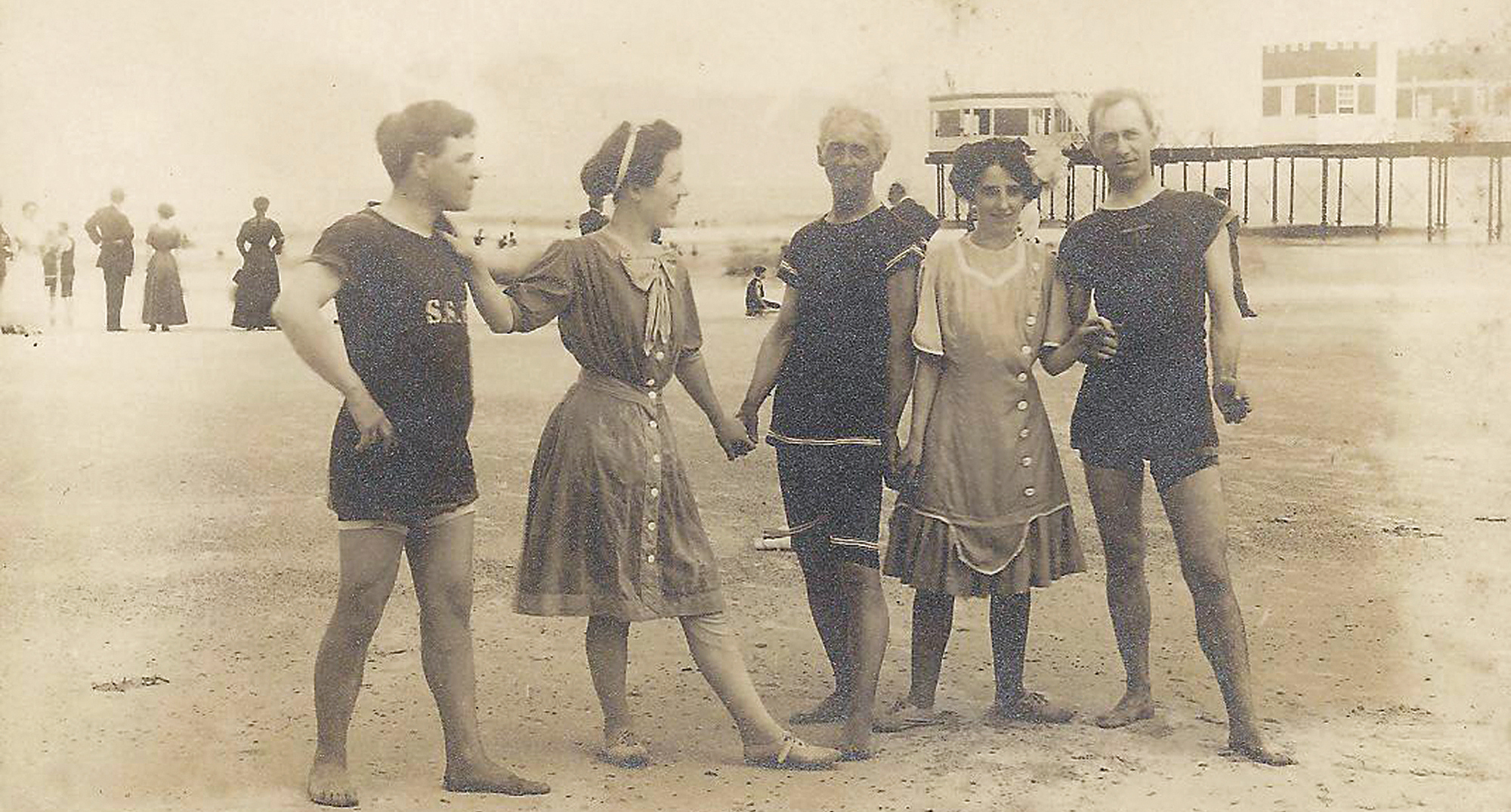Using images from postcards of a bygone era, a local resident and historical researcher will illustrate the evolution during swimwear and beach culture at an upcoming Lower Cape Fear Historical Society event at the Latimer House.
In her Bathing Beauties presentation, Elaine Henson will guide audience members through 50 years of American coastal history by using 130 images on historical postcards from the late 1800s until the 1940s.
Henson will also bring vintage swimsuits to the presentation.
“One of the bathing suits that will be on display belonged to one of the Latimers,” she said.
Another of the swimsuits Henson will display is a century old.
“It’s a bathing dress made of very fine worsted wool,” Henson said. “The person who owned this dress was born in 1898. She was probably 16 or 18 when she wore it.”
Some of Henson’s photographs were taken locally, like one slide that depicts a group of ladies wading in the Wrightsville Beach surf with their dresses gathered in their hands.
“The fourth slide shows a captured porpoise at Wrightsville Beach. I believe it’s at the steps of the Oceanic Hotel. It’s pretty fascinating,” Henson said.
Henson also has postcards and photos from Lumina Pavilion, which was built in 1905. One image is of a father and two sons at the pavilion; another shows women in red rented Lumina swim suits.
Henson said one of the most intriguing topics in Bathing Beauties is the bathing machine: a wooden box on wheels that was pulled to the edge of the water to allow women to enter and exit the ocean without being seen by beachgoers in their swimming attire.
“They’re strange-looking contraptions. They look like little houses. They were mainly used in Europe, but there were some American beaches that also used them,” Henson said.
Henson said women used to wear swimming shoes.
“You had to wear the shoes because you had stockings. You could not walk out into the ocean in stockings and have them not get all torn up on shells, so they wore bathing shoes as well,” she said.
Henson added the hems of dresses were often weighted to ensure the ladies’ skirts did not rise while they swam. While this would surely be considered a drowning hazard today, Wrightsville Beach had a different set of water safety regulations in the early 1900s.
“The lifelines were literal lines of rope,” Henson explained. “They would anchor them at various places going straight out into the surf. They were at waist high. All bath houses, and most municipalities, would have to have these lifelines. They didn’t work out that well because they didn’t last that long. I have a whole collection of lifelines.”
Henson’s illustrated lecture will take place at the Latimer House on Thursday, Aug. 6, 6:30-8 p.m.
Entrance fee is $5 per person and free for Lower Cape Fear Historical Society members. Light refreshments will be provided.
email [email protected]




